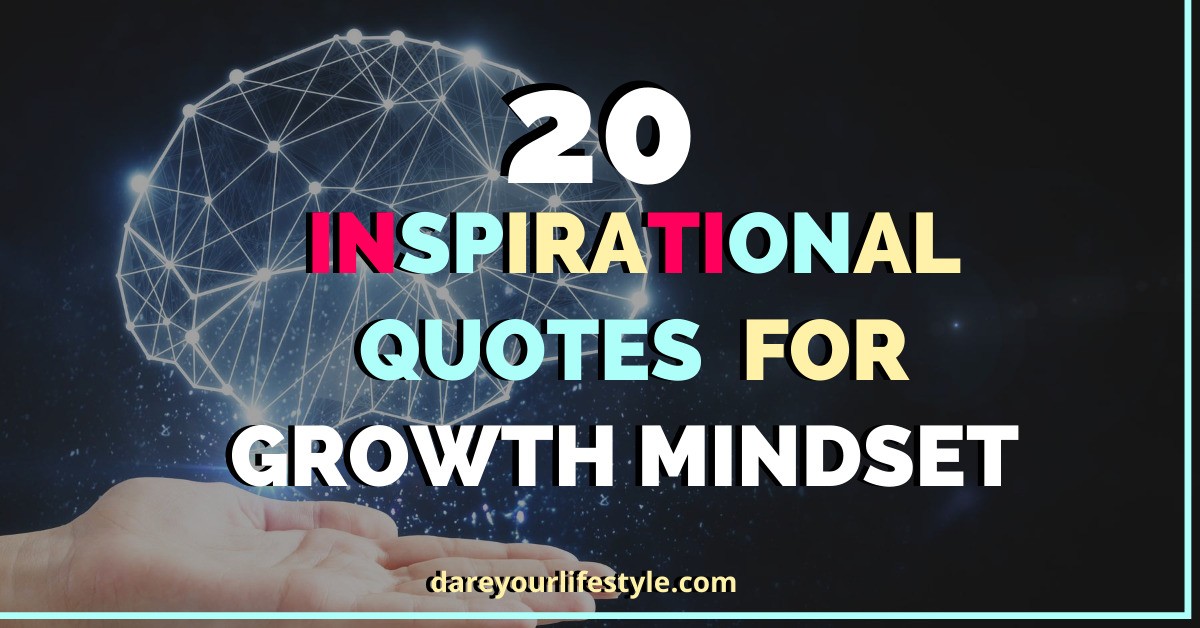Disclaimer: This post may contain affiliate links, meaning we get a small commission if you make a purchase through our link at no extra cost to you. For more information, please visit our Disclaimer Page.

Are you tired of pouring your heart into blog posts that barely get any views? In 2024, driving traffic to your blog isn’t just about creating great content – it’s about strategically positioning yourself in an increasingly competitive digital landscape. With over 600 million blogs worldwide, standing out has never been more challenging.
But here’s the good news: you don’t need to be a marketing genius to dramatically increase your blog traffic. Whether you’re a seasoned blogger struggling with plateauing numbers or a newcomer looking to build your audience from scratch, there are proven tactics that can transform your blog’s performance. 💡
Let’s explore 10 powerful, actionable strategies that will help you boost your blog traffic in 2024. From optimizing your SEO game to leveraging the latest social media trends, these methods will give your blog the visibility it deserves. 🚀

Table of Contents
Optimize Your SEO Strategy
Update Keyword Research for 2024 Trends
In 2024, keyword research requires a more sophisticated approach than ever before. You’ll need to focus on search intent and semantic search to stay ahead of your competition. Here’s how you can conduct effective keyword research:
| Keyword Type | Description | Impact on Traffic |
|---|---|---|
| Long-tail Keywords | Specific, longer phrases | High conversion rate, lower competition |
| Semantic Keywords | Related terms and concepts | Broader reach, natural content flow |
| Voice Search Keywords | Conversational phrases | Growing mobile traffic, featured snippets |
| Local Keywords | Geographic-specific terms | Targeted regional traffic |
Start by using tools like Google Keyword Planner, Semrush, or Ahrefs to identify keywords with:
- Monthly search volume between 100-10,000
- Low to medium competition
- Clear search intent alignment
- Trending potential for 2024
Improve Meta Descriptions and Titles
Your meta descriptions and titles are crucial for attracting clicks from search results. Here’s your optimization checklist:
- Title Tags:
- Keep length between 50-60 characters
- Include primary keyword near the beginning
- Use power words to increase CTR
- Include current year when relevant
- Create unique titles for each page
- Meta Descriptions:
- Optimal length: 150-160 characters
- Include primary and secondary keywords naturally
- Add a clear call-to-action
- Highlight unique value propositions
- Write compelling, clickable copy
Remember to follow this formula for effective title tags:
Primary Keyword + Secondary Keyword + Brand Name (if space permits)
Create SEO-optimized Images
Visual content is increasingly important for SEO success. Optimize your images using these essential techniques:
- Image Naming:
- Use descriptive filenames
- Include relevant keywords
- Separate words with hyphens
- Keep names concise
- Alt Text Optimization:
- Write descriptive alt text
- Include target keywords naturally
- Keep it under 125 characters
- Provide context for the image
- Technical Optimization:
- Compress images without quality loss
- Use next-gen formats (WebP, AVIF)
- Implement lazy loading
- Choose appropriate dimensions
| Image Element | Best Practice | Example |
|---|---|---|
| Filename | keyword-focused-description.jpg | blog-traffic-strategies-2024.jpg |
| Alt Text | Descriptive with keywords | “Chart showing top blog traffic strategies for 2024” |
| Title | Clear, keyword-rich | “Blog Traffic Growth Strategies Infographic 2024” |
Additional Technical SEO Considerations:
- Image Loading Speed:
- Use CDN for faster delivery
- Implement responsive images
- Set appropriate image dimensions
- Enable browser caching
- Mobile Optimization:
- Ensure images scale properly
- Test loading times on mobile
- Use appropriate image sizes
- Enable AMP when beneficial
- Structured Data:
- Implement image schema markup
- Use appropriate image object properties
- Include relevant image metadata
- Link images to related content
Remember to regularly audit your image SEO performance using tools like Google Search Console’s Image Report and make adjustments based on:
- Click-through rates
- Image search appearance
- Mobile usability issues
- Loading speed metrics
Now that you’ve optimized your SEO foundation, it’s time to expand your reach through social media platforms, where your newly optimized content can gain additional exposure and engagement.

Leverage Social Media Platforms
Choose Platforms Aligned with Target Audience
Selecting the right social media platforms is crucial for maximizing your blog’s reach. Each platform has unique demographics and content preferences that can either amplify or diminish your efforts.
Here’s a breakdown of major platforms and their primary audiences:
| Platform | Primary Demographics | Best Content Types | Posting Frequency |
|---|---|---|---|
| 18-34 years, visual-focused | Images, Stories, Reels | 1-2 times daily | |
| 25-45 years, professionals | Long-form articles, industry insights | 2-3 times weekly | |
| 25-34 years, news-focused | Short updates, threads, polls | 3-5 times daily | |
| 25-44 years, mostly female | Visual guides, infographics | 3-5 times daily | |
| 25-54 years, diverse | Mixed content, community posts | 1-2 times daily | |
| TikTok | 16-24 years, trend-focused | Short videos, tutorials | 1-3 times daily |
To identify your ideal platforms:
- Analyze your blog’s target audience demographics
- Review your content type and format
- Assess your resource availability for platform management
- Consider platform-specific engagement rates
- Evaluate competitor presence and success
Create Shareable Content
Once you’ve selected your platforms, focus on creating content that naturally encourages sharing. Your social media content should be:
- Platform-Optimized
- Adapt content format to each platform’s preferences
- Use platform-specific features (Instagram Stories, Twitter polls)
- Follow recommended image sizes and video lengths
- Visually Appealing
- Create custom graphics for blog posts
- Use consistent branding elements
- Incorporate your blog’s color scheme
- Design eye-catching thumbnails
- Value-Driven
- Share actionable tips from your blog posts
- Create infographics summarizing key points
- Develop quick-win solutions for common problems
- Offer exclusive social media content
- Engagement-Focused
- Ask questions in your posts
- Create polls and surveys
- Share behind-the-scenes content
- Respond to comments promptly
Tips for maximizing shareability:
- Use strong calls-to-action
- Include relevant hashtags strategically
- Time your posts for maximum visibility
- Create platform-specific content series
- Leverage trending topics in your niche
To maintain consistency across platforms while keeping content fresh:
- Develop a content calendar
- Batch create social media content
- Use scheduling tools for automated posting
- Monitor performance metrics
- Adjust strategy based on engagement data
Remember to maintain a healthy ratio between promotional and value-adding content:
| Content Type | Recommended Ratio |
|---|---|
| Educational | 40% |
| Entertaining | 30% |
| Promotional | 20% |
| Personal/Behind-the-scenes | 10% |
Key metrics to track for social media success:
- Engagement rate
- Click-through rate
- Share count
- Follower growth
- Website traffic from social
- Conversion rate
For maximum impact, implement these advanced strategies:
- Cross-promote between platforms
- Create platform-exclusive content
- Develop social media partnerships
- Use social listening tools
- Participate in relevant conversations
Now that you’ve established your social media presence, it’s time to focus on creating high-quality content that will keep your audience coming back for more.

Create High-Quality Content
Focus on Trending Topics
Creating content around trending topics gives your blog an immediate advantage in attracting readers. To effectively leverage trends in 2024, you need to:
- Monitor social media trends using tools like:
- Google Trends
- BuzzSumo
- Twitter Trending Topics
- Reddit’s rising posts
- Industry-specific forums
The key is identifying trends early and adding your unique perspective. Here’s a framework for selecting trending topics:
| Criteria | What to Consider | Why It Matters |
|---|---|---|
| Relevance | Topic alignment with your niche | Maintains audience interest |
| Timing | How new the trend is | Maximizes traffic potential |
| Longevity | Whether it’s a fad or lasting trend | Ensures sustainable traffic |
| Competition | Current content saturation | Identifies opportunity gaps |
Incorporate Multimedia Elements
Your content needs to be visually engaging to stand out in 2024. Here’s how to effectively use multimedia:
- Images and Infographics
- Use custom graphics that explain complex concepts
- Include relevant screenshots for tutorials
- Create branded featured images for social sharing
- Design infographics summarizing key points
- Videos and Animations
- Embed relevant YouTube content
- Create short explanatory videos
- Use GIFs to demonstrate processes
- Include video thumbnails with play buttons
- Interactive Elements
- Add clickable tables of contents
- Include expandable sections
- Implement survey elements
- Create interactive calculators when relevant
Write Longer, Comprehensive Posts
Long-form content consistently outperforms shorter posts in terms of engagement and search rankings. Here’s how to create comprehensive content:
- Structure Your Long-form Content
- Start with a clear outline
- Break content into digestible sections
- Use descriptive subheadings
- Include jump links for navigation
- Depth and Detail
- Cover every aspect of your topic
- Include expert quotes and statistics
- Provide real-world examples
- Address common questions and concerns
- Research Quality
- Cite authoritative sources
- Include current statistics
- Link to relevant studies
- Update information regularly
Tips for Creating Comprehensive Posts:
| Element | Implementation | Impact |
|---|---|---|
| Word Count | Aim for 2000+ words | Better search visibility |
| Research | Include 5+ credible sources | Increased authority |
| Examples | Minimum 3 case studies | Enhanced understanding |
| Updates | Quarterly content reviews | Maintained relevance |
Remember to maintain readability despite the length:
- Use short paragraphs (2-3 sentences)
- Include bullet points and numbered lists
- Add summary boxes for key points
- Use transition sentences between sections
For optimal content organization:
- Research Phase
- Gather reliable data
- Identify key statistics
- Find relevant case studies
- Source expert opinions
- Writing Phase
- Create detailed outlines
- Write comprehensive sections
- Include multimedia elements
- Add internal/external links
- Optimization Phase
- Edit for clarity
- Format for readability
- Optimize for SEO
- Add meta descriptions
Creating high-quality content requires consistent effort and attention to detail. Your goal is to provide comprehensive, well-researched information that answers your readers’ questions completely. By focusing on trending topics, incorporating various multimedia elements, and creating in-depth content, you’ll build a strong foundation for increasing your blog traffic. Now that you’ve mastered content creation, let’s explore how building strategic partnerships can amplify your reach even further.

Build Strategic Partnerships
Guest Posting Opportunities
Strategic partnerships can significantly amplify your blog’s reach, and guest posting remains one of the most effective partnership strategies. When you collaborate with other bloggers and websites in your niche, you create a win-win situation that benefits both parties.
Here’s how you can maximize guest posting opportunities to boost your blog traffic:
Identifying the Right Partners
| Partner Type | Benefits | What to Look For |
|---|---|---|
| Industry Blogs | High-quality backlinks, targeted audience | Domain authority > 40, engaged readership |
| News Websites | Broad exposure, credibility | Regular content updates, strong social presence |
| Niche Forums | Dedicated community, direct engagement | Active discussions, relevant topics |
| Professional Platforms | Professional network growth, authority | LinkedIn, Medium, industry platforms |
Strategic Outreach Process
- Research Potential Partners
- Analyze their content quality
- Check their engagement metrics
- Review their guest posting guidelines
- Assess their audience overlap
- Value Proposition Development
- Create unique content angles
- Highlight your expertise
- Offer reciprocal opportunities
- Demonstrate past success stories
Building successful guest posting partnerships requires a systematic approach. Start by creating a spreadsheet of potential partners, categorizing them by:
- Domain authority
- Monthly traffic
- Content relevance
- Engagement rates
- Social media presence
Content Creation Guidelines
When developing guest posts, focus on creating content that:
- Provides unique insights
- Includes actionable tips
- Features original research
- Incorporates relevant case studies
- Aligns with the host site’s style
Remember to maintain your authentic voice while adapting to the host site’s guidelines. This balance helps establish your authority while respecting their platform.
Maximizing Partnership Benefits
To get the most out of your guest posting partnerships:
- Strategic Bio Creation
- Include a compelling call-to-action
- Link to a relevant landing page
- Showcase your expertise
- Offer a free resource
- Cross-Promotion Strategy
- Share on your social channels
- Email your subscribers about the post
- Engage with comments
- Create supporting content on your blog
Tracking Success Metrics
Monitor these key metrics to evaluate your guest posting success:
| Metric | Why It Matters | How to Track |
|---|---|---|
| Referral Traffic | Measures direct impact | Google Analytics |
| Backlink Quality | SEO value | Backlink analysis tools |
| Social Shares | Content reach | Social media analytics |
| Lead Generation | Partnership ROI | CRM system |
Building Long-Term Relationships
Transform one-time guest posts into ongoing partnerships by:
- Maintaining regular communication
- Sharing their content
- Offering additional value
- Creating content series
- Developing joint projects
Your guest posting strategy should focus on quality over quantity. It’s better to have fewer, high-quality partnerships than numerous low-value ones. Aim to contribute posts that genuinely benefit the host site’s audience while showcasing your expertise.
To maximize the impact of each guest post:
- Promote extensively on your channels
- Engage with readers in the comments
- Create follow-up content on your blog
- Track and analyze performance metrics
With this solid foundation in strategic partnerships through guest posting, you’re ready to explore email marketing strategies to further expand your blog’s reach. Email marketing complements your partnership efforts by helping you nurture relationships with both your existing audience and new readers gained through guest posting collaborations.

Implement Email Marketing
Build Your Subscriber List
Email marketing remains one of the most effective ways to drive consistent traffic to your blog. With an average ROI of $36 for every $1 spent, building a robust subscriber list should be at the top of your traffic generation priorities.
Here are the most effective strategies to grow your email list in 2024:
- Strategic Lead Magnet Placement
- Create compelling downloadable resources
- Offer exclusive content upgrades
- Develop industry-specific templates
- Provide free tools or calculators
- Optimize Sign-up Forms
- Use exit-intent popups
- Implement inline forms within content
- Add sticky header forms
- Place forms in sidebar widgets
Best Practices for Lead Magnets
| Lead Magnet Type | Conversion Rate | Best Use Case |
|---|---|---|
| eBooks | 20-30% | In-depth topics |
| Checklists | 30-40% | Quick wins |
| Templates | 25-35% | Practical application |
| Mini-courses | 35-45% | Educational content |
| Swipe files | 20-25% | Ready-to-use resources |
To maximize your subscriber growth, focus on these key elements:
- Value Proposition
- Clearly communicate the benefits
- Address specific pain points
- Highlight immediate results
- Set realistic expectations
- Form Design
- Keep fields minimal (name and email only)
- Use contrasting colors for CTA buttons
- Implement mobile-responsive design
- A/B test form placement
- Incentive Structure
- Offer time-sensitive bonuses
- Create segment-specific incentives
- Implement referral programs
- Use double opt-in for quality leads
Advanced List-Building Techniques
- Content Upgrades
Create specific lead magnets for your most popular blog posts. These targeted offerings can convert 5-10 times better than generic lead magnets. - Webinar Registration
Host regular webinars to capture email addresses while providing value. This approach typically yields a 20-40% conversion rate. - Quiz Funnels
Implement interactive quizzes that provide personalized results via email. This strategy can increase conversion rates by 30-50%. - Partnership Campaigns
Collaborate with complementary businesses to cross-promote and share audiences. This can rapidly expand your reach and credibility.
Optimization Tips
To ensure maximum conversion rates:
- Testing Schedule
- A/B test form placement weekly
- Update lead magnets quarterly
- Review conversion data monthly
- Adjust messaging based on feedback
- Technical Considerations
- Ensure fast loading times
- Implement GDPR compliance
- Use secure data collection
- Mobile-optimize all forms
- Content Strategy
- Segment lead magnets by topic
- Create industry-specific resources
- Develop persona-based offerings
- Update materials regularly
Performance Metrics to Track
| Metric | Target Range | Action Items |
|---|---|---|
| Conversion Rate | 2-5% | Optimize form placement |
| Bounce Rate | <40% | Improve landing pages |
| Click-through Rate | >20% | Enhance CTA design |
| Form Abandonment | <60% | Simplify form fields |
| Mobile Conversion | >2% | Mobile optimization |
Now that you’ve established a strong foundation for building your email list, let’s explore how to optimize your website for mobile users to ensure maximum accessibility and engagement across all devices.

Optimize for Mobile Users
In today’s digital landscape, mobile optimization isn’t just an option—it’s essential for your blog’s success. With over 60% of web traffic coming from mobile devices, ensuring your blog performs flawlessly on smartphones and tablets can significantly impact your traffic numbers.
Improve Loading Speed
Your mobile visitors expect lightning-fast loading times, and every millisecond counts. Here’s how you can optimize your blog’s mobile loading speed:
Essential Speed Optimization Techniques
- Image Optimization
- Compress all images before uploading
- Use next-gen formats like WebP
- Implement lazy loading for images
- Set appropriate image dimensions
- Code Optimization
- Minify CSS, JavaScript, and HTML
- Remove unused code
- Combine multiple files into one
- Utilize browser caching
- Server-side Improvements
- Choose a reliable hosting provider
- Enable GZIP compression
- Use a Content Delivery Network (CDN)
- Optimize database queries
Here’s a comparison of common loading speed factors and their impact:
| Speed Factor | Impact Level | Difficulty to Implement | Priority |
|---|---|---|---|
| Image Optimization | High | Low | Immediate |
| Code Minification | Medium | Low | High |
| CDN Implementation | High | Medium | High |
| Server Upgrade | High | Medium | Medium |
| Database Optimization | Medium | High | Medium |
Advanced Mobile Speed Optimization
To further enhance your mobile loading speed:
- Implement AMP (Accelerated Mobile Pages)
- Create lightweight versions of your posts
- Use AMP-specific templates
- Maintain consistent content across versions
- Progressive Web App Features
- Enable offline access
- Implement service workers
- Create app-like experience
- Technical Optimizations
- Reduce server response time
- Minimize redirect chains
- Optimize above-the-fold content
- Prioritize visible content loading
Testing and Monitoring
Regular testing is crucial for maintaining optimal mobile performance:
- Use Testing Tools
- Google Mobile-Friendly Test
- PageSpeed Insights
- GTmetrix
- WebPageTest
- Monitor Key Metrics
- First Contentful Paint (FCP)
- Time to Interactive (TTI)
- Speed Index
- Total Blocking Time (TBT)
Common Speed Issues and Solutions
Here are frequent mobile speed problems and their fixes:
- Large Images
- Implement responsive images
- Use modern image formats
- Automate image optimization
- Heavy JavaScript
- Defer non-critical scripts
- Remove unused code
- Use async loading when possible
- Render-blocking Resources
- Inline critical CSS
- Defer non-critical CSS
- Optimize JavaScript delivery
Best Practices for Mobile Speed
Follow these guidelines to maintain optimal mobile performance:
- Regular Maintenance
- Conduct monthly speed audits
- Clean up database regularly
- Update plugins and themes
- Remove unused assets
- Content Delivery
- Prioritize critical content
- Optimize for mobile-first indexing
- Use responsive design patterns
- Implement progressive loading
- User Experience Considerations
- Minimize pop-ups on mobile
- Optimize button sizes
- Ensure readable font sizes
- Implement touch-friendly navigation
Now that your mobile loading speed is optimized, it’s time to focus on creating engaging video content that captures your audience’s attention while maintaining these performance improvements.

Utilize Video Content
Create YouTube Channel
Building a YouTube channel alongside your blog creates a powerful content ecosystem that can significantly boost your traffic. When you establish your YouTube presence, you’re tapping into the world’s second-largest search engine, opening up enormous potential for audience growth.
To create an effective YouTube channel that drives traffic to your blog:
- Channel Setup Essentials
- Choose a channel name matching your blog
- Create compelling channel art and profile picture
- Write an optimized “About” section with blog links
- Organize content into relevant playlists
- Content Strategy
- Transform popular blog posts into video format
- Create video series based on your blog categories
- Produce tutorials and how-to content
- Share expert interviews and industry insights
Here’s a strategic approach to video content types that perform well:
| Video Type | Purpose | Traffic Impact |
|---|---|---|
| How-to Tutorials | Educational value | High conversion |
| Behind-the-scenes | Build authenticity | Medium engagement |
| Expert Interviews | Authority building | High credibility |
| Topic Overview | Brand awareness | Broad reach |
| Q&A Sessions | Community engagement | Direct interaction |
Embed Videos in Blog Posts
Integrating videos into your blog posts creates a multimedia experience that keeps visitors engaged longer and improves your SEO rankings. Here’s how to effectively embed videos in your content:
Strategic Video Placement
Position your videos where they add the most value:
- Above the fold for immediate engagement
- Within relevant content sections
- At natural break points in long-form content
- As supplementary material to complex topics
Optimization Tips
To maximize the impact of embedded videos:
- Technical Considerations
- Use responsive video players
- Optimize loading speed
- Include proper video schema markup
- Enable autoplay only when appropriate
- Content Enhancement
- Add custom thumbnails
- Include video transcripts
- Write compelling video descriptions
- Create timestamp links for long videos
- Cross-Promotion Strategy
- Include clear calls-to-action
- Link back to related blog content
- Share video timestamps in post
- Encourage video sharing
Remember to optimize your video content for both platforms:
| Platform | Optimization Focus | Key Benefits |
|---|---|---|
| YouTube | SEO-friendly titles | Increased discoverability |
| Blog | Context-rich embedding | Enhanced user experience |
| Both | Clear CTAs | Higher engagement rates |
| Both | Quality thumbnails | Improved click-through |
Your video strategy should focus on creating value-rich content that complements your written posts. Consider these engagement-boosting techniques:
- Video Series Creation
- Develop themed content sequences
- Maintain consistent posting schedule
- Build anticipation for upcoming episodes
- Cross-reference between episodes
- Interactive Elements
- Include polls and surveys
- Ask for viewer feedback
- Create response videos
- Host live streaming sessions
- Technical Quality
- Invest in good audio equipment
- Ensure proper lighting
- Use professional editing software
- Maintain consistent branding
By implementing these video content strategies, you’ll create a more dynamic and engaging blog experience. Now that you’ve established your video presence, let’s explore how engaging with your community can further amplify your blog’s reach and impact.






